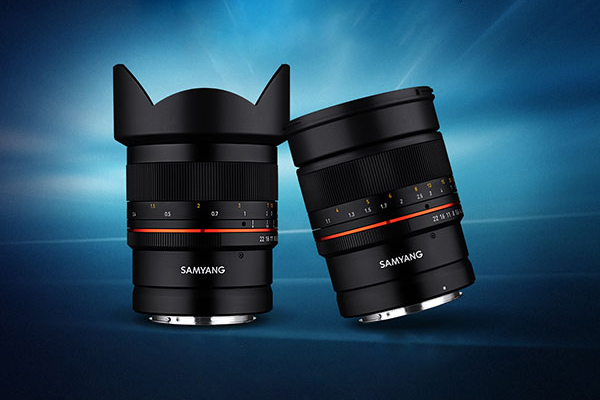
Third-party RF mount lenses for Canon’s new full-frame mirrorless line are coming. On Thursday, February 28, Samyang announced the MF 14mm f/2.8 RF and MF 85mm f/1.4 RF lenses. The new RF lenses come shortly after the company announced the Samyang XP 10mm f/3.5, the widest-angle lens that doesn’t fall into the fisheye category.
Samyang says no other third-party lens manufacturer has announced RF mount lenses yet. The company says the upcoming lenses are a quick response to industry trends, bringing a wide-angle and standard focal length lens to the RF family.
Both lenses are manual focus lenses, which may deter many photographers. The MF 14mm captures a 115.7-degree field of view ideal for landscapes and interiors. The company says the lens offers excellent sharpness.
The Samyang MF 85mm f/1.4, based on earlier designs in other mount options, is already favored for the bokeh at that f/1.4 aperture. Samyang says the lens is ideal for portraits and offers vivid colors along with that bokeh.
While Canon has already launched a handful of RF lenses — and adapters to modify the company’s full-frame DSLR lenses to fit — the lenses launched so far are geared more towards high-end photographers. Those high-end price points don’t mix as well with the budget photographers eyeing the new EOS RP, which unlike the lenses, is the cheapest full-frame mirrorless at launch yet with a $1,300 price point.
Samyang hasn’t yet released a price list for the new lenses, but based on their existing lenses and the fact that the new lenses are manual focus only, the upcoming options will likely be more budget friendly. In the currently available mounts, Samyang has an 85mm f/1.4 for $270 and an EF-mount 14mm f/2.8 ED AS IF UMC for about $340.
Along with the upcoming RF mount lenses, Samyang also announced the XP 10mm f/3.5 earlier this week, for the Nikon F and Canon EF mounts. The company says the lens is the widest prime lens available that isn’t a fish-eye lens, offering minimal distortion. The lens captures a 130-degree field of view.
Designed with 18 lenses in 11 groups, the lens aims to minimize distortion that tends to be more extreme with ultra-wide angle lenses. The company says elements of the lens are geared towards reducing aberrations, flare, and ghosting. The lens will also feature a metal body.
The Samyang XP 10mm f/3.5 will be available this spring. The lens is listed for 1,099 euros, which is roughly $1,250 in the U.S.
Editors' Recommendations
- Lens teardown reveals how Canon made an affordable super-telephoto
- Should you buy the Canon EOS R5 or EOS R6? The new mirrorless options compared
- Canon’s EOS R5 and R6 will dominate mirrorless — and kill the DSLR
- Nikon Z 50 vs. Canon EOS M6 Mark II: Nikon’s newest takes on Canon’s champ
- The best Sony lenses for E-mount mirrorless cameras




